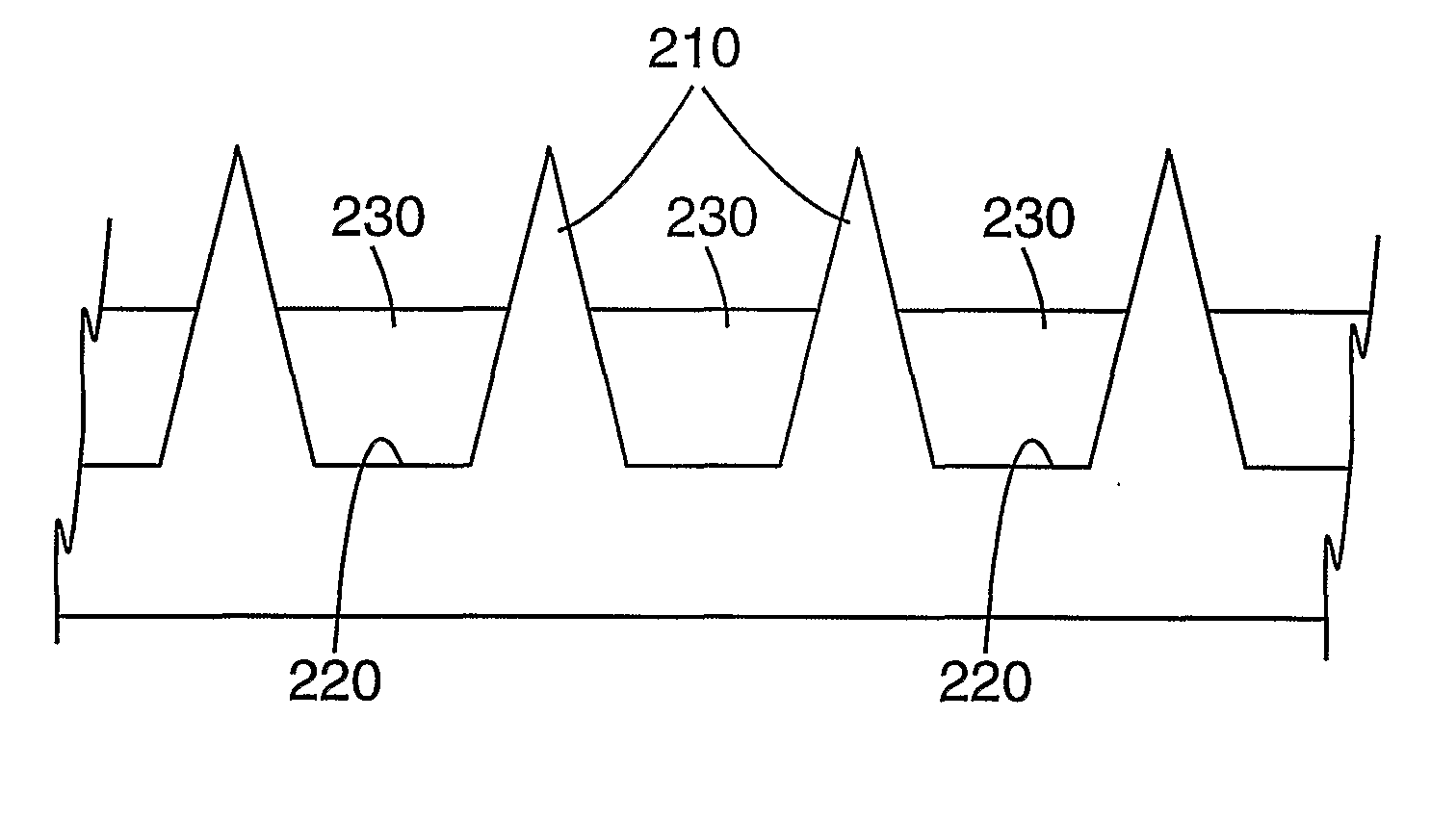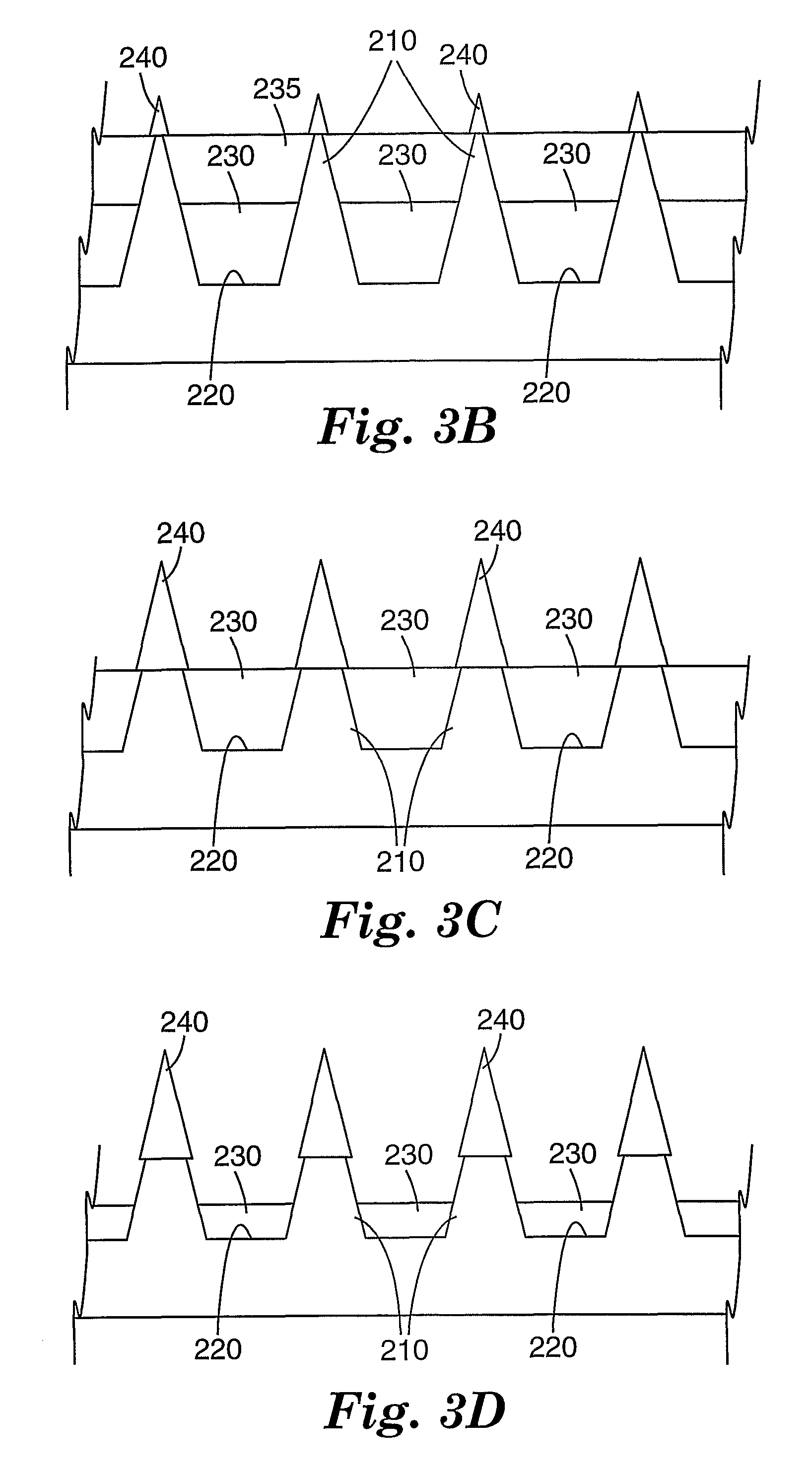Masking method for coating a microneedle array
a technology of microneedle array and masking method, which is applied in the field of masking method of coating a microneedle array, can solve the problem of providing a challenge to the coating of a microneedle array
- Summary
- Abstract
- Description
- Claims
- Application Information
AI Technical Summary
Benefits of technology
Problems solved by technology
Method used
Image
Examples
example 1
[0067]An aluminum mixture of 6.0 g aluminum potassium sulfate dodecahydrate (Penta, USP grade), 0.24 g aluminum hydroxide monohydrate, and 100 mL water was prepared and sonicated until the solution was nearly clear. The aluminum mixture was then spray coated for 1 minute onto an array using a Six-Jet atomizer (Model 9306, TSI Inc., Shoreview, Minn.) that was modified with a small volume reservoir, a turbulent flow generator, and an array holder. The rate of coating was nominally 20 μg of aluminum per minute. The microneedle array was then placed on a flat surface with the needles pointing upward. HFE-7500 3M™ NOVEC™ Engineered Fluid, 3-ethoxy-1,1,1,2,3,4,4,5,5,6,6,6-dodecafluoro-2-trifluoromethyl-hexane, (3M Co., St. Paul, Minn.) was used as a masking fluid. An aliquot (25 μL) of masking fluid was applied to the center of the array using a pipette and allowed to spread across the array. An antigen coating formulation was prepared by mixing equal parts of tetanus toxoid (Statens Seru...
example 2
[0068]A coated array was prepared according to the procedure described in Example 1, with the exception that the aluminum mixture was spray coated for 3 minutes onto an array prior to application of the antigen coating formulation and a 13 μL aliquot of masking fluid was used. Examination of the antigen coated array by scanning electron microscopy (SEM) showed clumps or balls of material at or near the tips of the microneedles. Tetanus toxoid total-array content as measured by reversed phase HPLC was 19.1 μg (st. dev.=1.0 μg). Aluminum content of the coated array as measured by ICP was 57 μg (st. dev.=21 μg).
example 3
[0069]A coated array was prepared according to the procedure described in Example 1, with the following exceptions. The antigen coating formulation was prepared by mixing one part tetanus toxoid, 3 parts water, and 4 parts ethanol. A 13 μL aliquot of masking fluid was used. The nominal amount of tetanus toxoid in the applied antigen coating formulation was 4 μg. Examination of the antigen coated array by scanning electron microscopy (SEM) showed a relatively smooth coating over the microneedle surfaces.
Tetanus toxoid total-array content as measured by reversed phase HPLC was 4.4 μg (st. dev.=0.2 μg). Aluminum content of the coated array as measured by ICP was 13 μg (st. dev.=6 μg).
PUM
| Property | Measurement | Unit |
|---|---|---|
| thicknesses | aaaaa | aaaaa |
| thicknesses | aaaaa | aaaaa |
| thicknesses | aaaaa | aaaaa |
Abstract
Description
Claims
Application Information
 Login to View More
Login to View More - R&D
- Intellectual Property
- Life Sciences
- Materials
- Tech Scout
- Unparalleled Data Quality
- Higher Quality Content
- 60% Fewer Hallucinations
Browse by: Latest US Patents, China's latest patents, Technical Efficacy Thesaurus, Application Domain, Technology Topic, Popular Technical Reports.
© 2025 PatSnap. All rights reserved.Legal|Privacy policy|Modern Slavery Act Transparency Statement|Sitemap|About US| Contact US: help@patsnap.com



